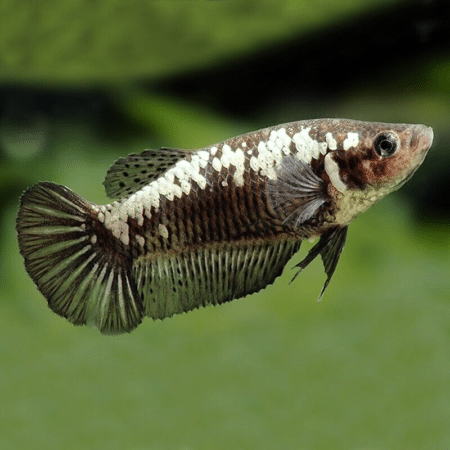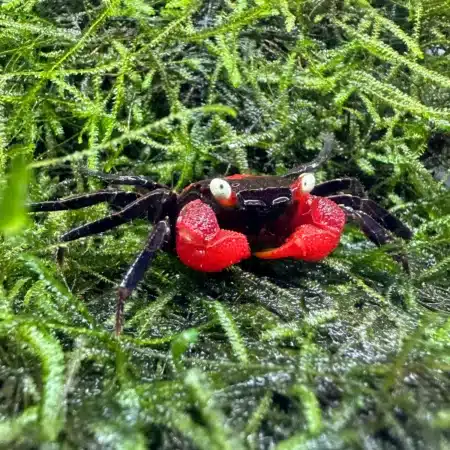Subtotal: £50.32
4 X King Koopa Nerite Snail Algae King Koopa Snail Neritina Juttingae
£8.71
Short Description: King Koopa Nerite Snail is a popular algae-eating snail that efficiently cleans aquariums. This package includes four snails, providing an effective solution for controlling algae growth. Perfect for both aesthetic appeal and practical benefits.
994 in stock
Attributes:
– Short Description: King Koopa Nerite Snail is a popular algae-eating snail that is known for its striking appearance and efficient cleaning abilities. It is an ideal addition to any aquarium, providing both aesthetic appeal and practical benefits by keeping algae growth under control. This package includes four King Koopa Nerite Snails, ensuring a balanced and effective algae-eating solution for your tank.
Product Categories: Algae Eaters, Fish
Secure Transit:
Our 24-hour courier service guarantees the safe transportation of your King Koopa Nerite Snails. We use specially designed poly boxes and heat packs during colder months to ensure that the snails arrive in optimal condition.
Shipping Convenience:
To make your shopping experience more convenient, we offer the option to combine multiple items in one order. This helps streamline the shipping process and saves you time and money.
Dead on Arrival (DOA) Policy:
In the unfortunate event that any of the snails arrive deceased, we have a Dead on Arrival (DOA) policy in place. Simply inform us promptly with photographic evidence, and we will either refund you or send you a replacement, ensuring your satisfaction.
Product Description:
Scientific and common names:
The King Koopa Nerite Snail, also known as Neritina Juttingae, is a species of freshwater snail that belongs to the Neritidae family.
Habitat:
These snails are native to Southeast Asia, particularly found in rivers and streams with moderate to fast-flowing water. They are adaptable and can thrive in various water conditions.
Tank setup:
A well-established aquarium with a capacity of at least 10 gallons is recommended for keeping King Koopa Nerite Snails. Provide plenty of hiding spots, such as rocks, driftwood, or plants, as they enjoy exploring and climbing. Ensure a stable water temperature and maintain good water quality.
Diet and nutrition:
King Koopa Nerite Snails are primarily herbivorous and feed on various types of algae. They are excellent algae eaters and can help control excessive algae growth in your aquarium. If the algae supply is insufficient, you can supplement their diet with algae wafers or blanched vegetables like zucchini or spinach.
Size and growth rate:
These snails have a moderate growth rate and can reach a size of approximately 1 inch (2.5 cm) in diameter.
Behavioral traits:
King Koopa Nerite Snails are peaceful and non-aggressive creatures. They are known for their distinctive shell patterns, which can vary from individual to individual. These snails are active during the day and will often explore every nook and cranny of your aquarium.
Care level:
These snails are relatively easy to care for, making them suitable for both beginner and experienced aquarists. Regular water parameter checks and maintenance are necessary to ensure their well-being.
Breeding and reproduction:
King Koopa Nerite Snails require brackish water conditions for successful breeding. They lay small, gelatinous eggs on hard surfaces, such as rocks or aquarium glass. However, hatching and raising the larvae can be challenging, and it is unlikely to occur in a freshwater aquarium.
Health and disease prevention:
Maintaining good water quality, providing a balanced diet, and avoiding sudden fluctuations in temperature and water parameters are essential for the health of King Koopa Nerite Snails. Regular observation and prompt action in case of any signs of illness or stress are recommended.
Optimal water conditions:
– Temperature: 72-78°F (22-26°C)
– pH: 7.0-8.0
– Hardness: 5-15 dGH
Lifespan:
King Koopa Nerite Snails have an average lifespan of 1-2 years, but with proper care, they can live longer.
Additional interesting facts:
– King Koopa Nerite Snails are known for their ability to clean algae from aquarium glass, plants, and decorations, making them a valuable addition to any tank.
– They have a unique and attractive shell pattern, which can vary from individual to individual.
– These snails are peaceful and can coexist with a wide range of fish and invertebrates.
– King Koopa Nerite Snails are not hermaphroditic, meaning they have separate sexes. However, it is challenging to distinguish between males and females based on external characteristics.















Reviews
There are no reviews yet.